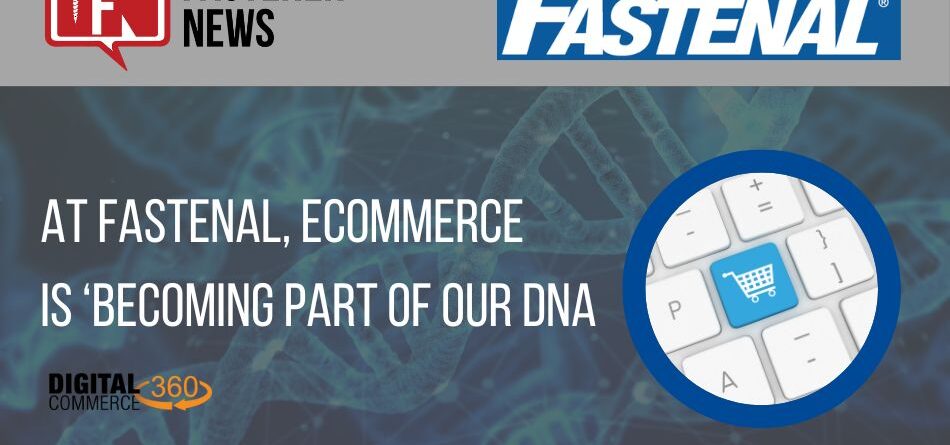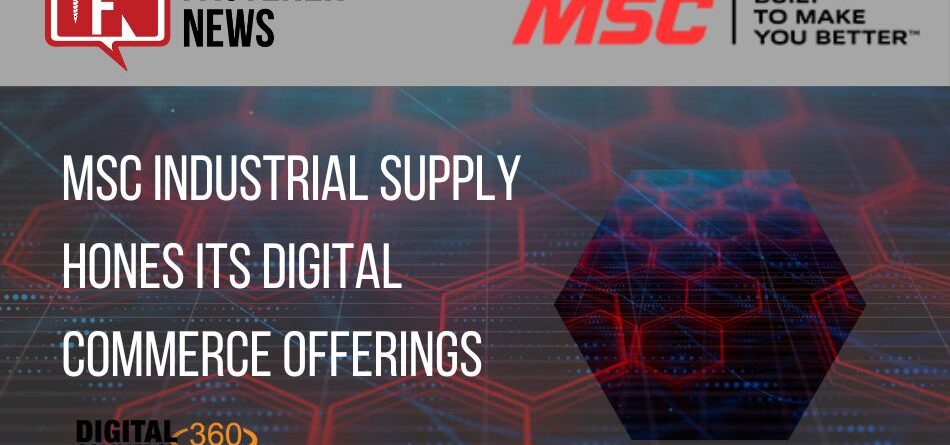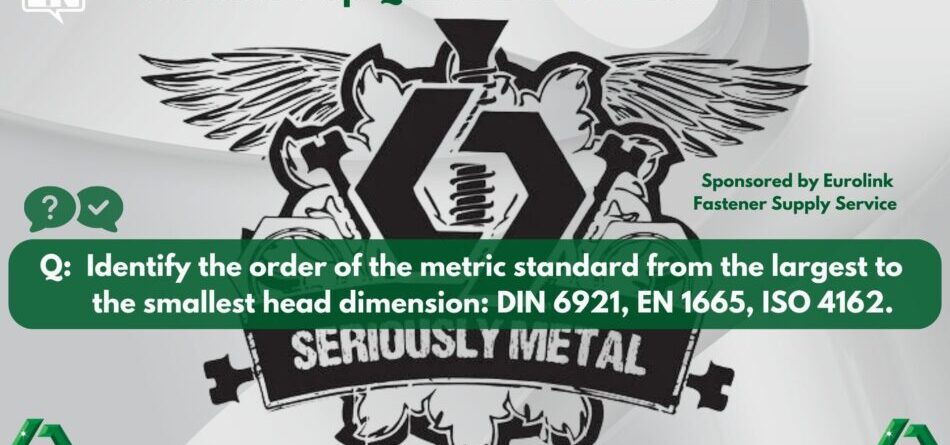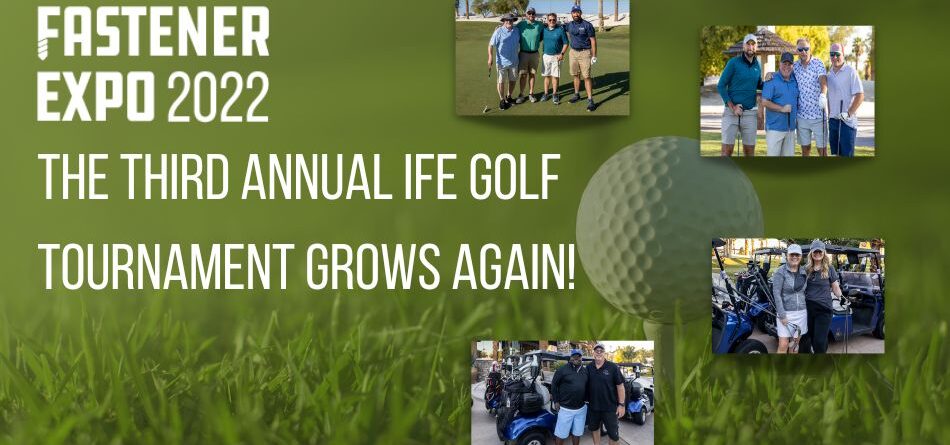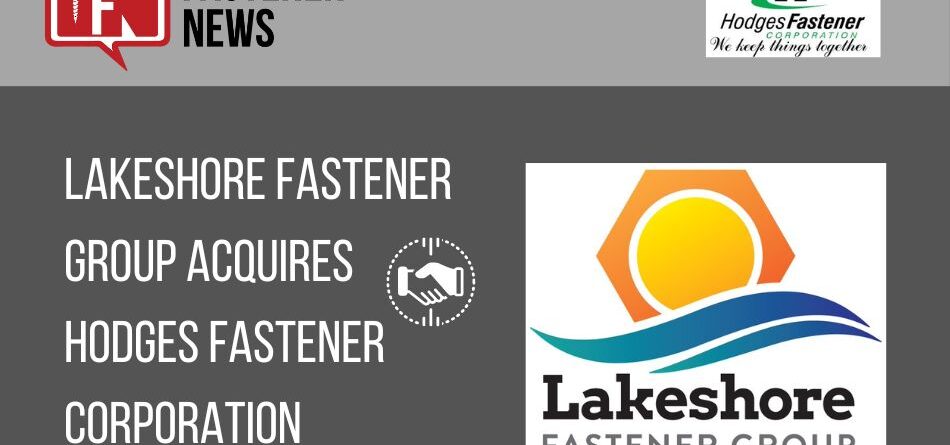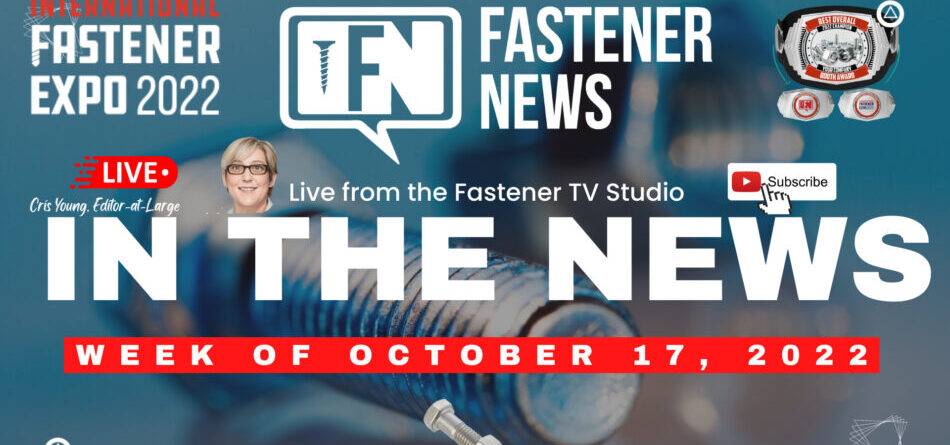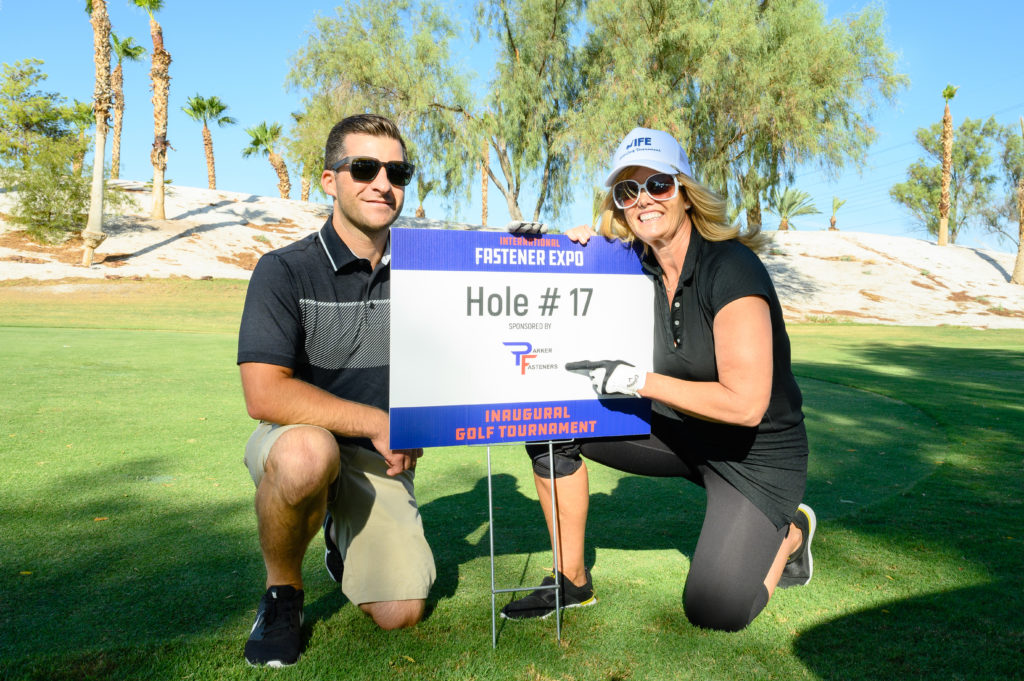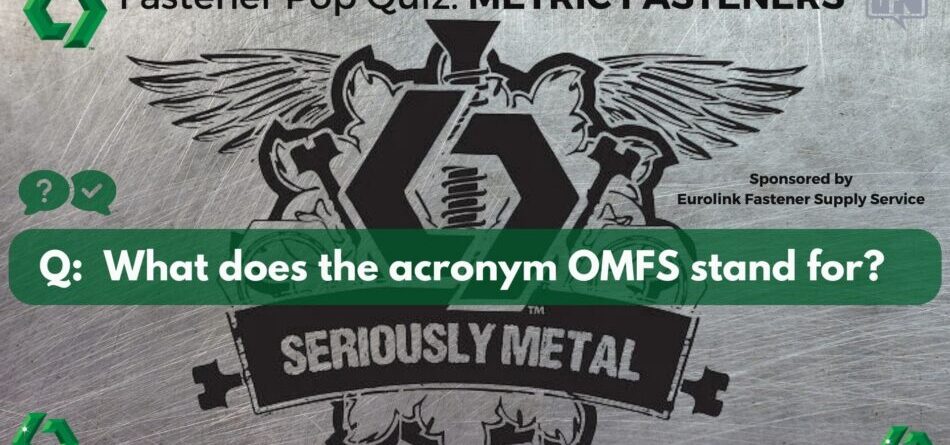Optimas CEO’s on Transformation and Growth

October 17th, 2022

By; Cris A. Young, Editor-at-Large
FND: Hello, Cris Young here from Fastener News Desk at the International Fastener Expo in Las Vegas, Nevada. I’m here today with the CEO’s of Optimas Solutions, Daniel Harms, CEO of Optimas Americas and Mike Tuffy, CEO of Optimas International. Gentlemen welcome, please introduce yourselves.

MT: Cris good afternoon. Hi everyone, my name is Mike Tuffy. As Cris has said I’m the CEO of Optimas International. Happy to be here with you today. I’ve been in the fastener industry all my working life. So happy to share a little bit of an update with regards to what we’re doing and how we’re going about it.
DH: Thank you, hello I’m Daniel Harms, as Cris said, CEO of the Americas. I joined Optimas last April as Chief Operating Officer and really come from outside of the fastener world, so you’ll hear a little bit of that today, about the differences that Mike and I bring to the table. I have 20 years distribution experience working in food and CPG and other large challenging supply chains. There’s been a lot of similarities that have been brought to my role here at Optimas. One of my main areas of focus has been in transformation and we’re looking forward to sharing a little bit with you now about where Optimas is going in the future.
FND: Thank you, gentleman. One of the biggest differences I noticed between the two of you is that Mike you come from a fastener background and Daniel you’re coming from a business transformation background. How do you two gel those things together in order to move the company forward?
MT: I think it is fair to say that Daniel and I have been working together for over a year in our role as presidents and I think during that time what we’ve been able to do is to understand holistically about the business needs. I’m a commercial guy in essence and from that being able to understand the market conditions we’ve been through. As we all know some crazy times over the last couple of years. It’s been interesting just to understand the business needs and the industry and that I’m able to help and support Daniel and dovetail with regards to Daniel’s expertise as well.
DH: I think one of the things that’s been unique is bringing that outside perspective in. It has been a rough several years in the supply chain and I’m able to bring in a different view. Optimas was on this digitization journey when I arrived and really, we’ve seen that accelerate over the last few years. How do we use the data and the technology that we have to better serve our customers and to better serve our suppliers. I think one of the things that makes Mike’s and I’s relationship work really well is we both enjoy learning from each other and it’s never about one way or the other. It’s how do we blend the two approaches. How do we blend the experience and how do we propel the organization forward faster.
FND: Its old school fastener industry meets new school transformation and you guys have put that together and developed this program, this schedule and focus on your mission to move the company forward. How is your new CEO role different Mike from your past president role?
MT: In the president’s role Daniel and I really have been working together now as we say for over 12 months. I think overall there’s not going to be a massive difference. We were P&L focused on the president’s role but we took on much more than that.
I think in essence overall what happened with regards to AIP, the parent company of Optimas is that they were focusing on the business holistically, so Daniel and I were responsible not just for the P&L but also the balance sheet and all of the corporate side of the things. So really, I guess we’ve had about a year or so of job interview to make sure that we’re going to meet the objectives of the owners of the business and clearly, we’ve passed.
FND: Daniel from your perspective?
DH: I think to Mike’s point not much in the aspect of day-to-day will change. I think what I would say is look, Mike and I aren’t naïve. Optimas has had several senior leadership changes over the last several years. I think one of the things that was really important for us was to be able to demonstrate stability. To Mike’s point we’ve been kind of on this journey of a one-year job interview for the last 12 months. I think you know it’s really about how we start to take what we’ve demonstrated over the last 12 months and start building out those three-year plans. Where we are going from a growth perspective, where we are going from an investment perspective. That we really continue to leverage the investments that we made in manufacturing and technology to make sure that we not only meet our customers’ expectations today. It really set Optimas up for success. That we both believe passionately about that. We’re really set for the next several years.
FND: In a recent press release, there were six key areas identified that Optimas is focused on and where you will create the momentum to grow your business. How did you choose those key issues and concerns to focus on as part of the business transformation?

DH: When I arrived, as I said I was really brought in to start the transformation in the Americas. Really, Mike and the international team had done some similar work a few years earlier, so we were trying to play catch up a little bit. Then as we got into the transformation work it was really about what are the key things that are going to be important for the business going forward, right. I mean we applied these guiding principles of simplify. How do we make things simpler for our employees, for our customers, and for our suppliers. To connect. How do we connect the work to our people and make them feel part of the big picture. How do we drive execution and then how do we empower people.
This had to be an employee led change for it really to be not just a change initiative but really about transformation. Then as we were evaluating where we were on our digital journey, we had just launched an ERP transformation, it really became about a single source of truth being the platform for all of our change. What I mean by that is, I think when I arrived Mike and I talked about this a lot, we were coming off an old mainframe system and we just had very different reporting across all of our different business units. We really needed to drive things forward to have this single source of truth so that was a key component for us, where we were going to grow.
How we are going manage the investment given the challenges in the supply chain. With more people moving to localization and as we talked about, some of the investments being made in manufacturing really getting closer to the customer. Leveraging insourcing was going to be one of the key areas that we were going to grow.
FND: In the press release Optimas also put an emphasis on workforce, and how important people are to the growth of the company. Would you agree with that internationally as well?
MT: One hundred percent I think, in everything that we do. If you consider how we operate, we are in essence an extension of our customer needs.
From that people are so integral to what we do with the organization, and we’re blessed with an amazing team who we need to invest in as well. First of all, we do a lot of promotion from within. We were so delighted to see many of our team progress through training, through education, and through traveling around the world doing different roles. I think overall people are everything in our organization and from that we’re very happy to have made some investments. Very happy to see those people shine.
Here this week, this morning I’ve sat with a couple of our people that were going through our business plans. All the things that we need to do. They were flown in to see the opportunities to work with our team. Yes, absolutely people are everything.
FND: Keeping on the workforce topic, a lot of companies are experiencing workforce issues and that goes from hiring to retention. How will Optimas address these concerns and what will Optimas do to alleviate the major workforce issues out there?
DH: It’s so important. We really focus on trying to hire to retire, that would be the perfect scenario. In order to do that first we solicit input from our employees. We just launched a global employee survey this year and have been working through that with the individual business unit leaders. Really soliciting that feedback and then going back more importantly and making some of the changes as we get the feedback.
We’ve launched a new diversity equity inclusion that came with direct feedback out of that employee survey. Really being able to work down within our teams because the feedback is different.
Depending on whether you’re in supply chain or working in an office, or you’re working in a warehouse we really have to meet our employees where they are today. First, it’s about investment and making sure we’re listening to them and then Mike mentioned it’s how do we create opportunities for people to continue to grow.
We want to be somewhere where Optimas has a path for success and that comes through creating those opportunities, investing in education, and training and then I think maybe most importantly is recognition.
Mike and I’s favorite meetings that we get to have every quarter is where we have something called our Thread Award winners. We have an employee group that nominates five employees every quarter and we recognize those employees who are going above and beyond. Those really are some of the most fun meetings that Mike and I get to do.
MT: It’s great because we surprise the people. Literally they will be called into a meeting, or they’ll have a team meeting before we meet face to face.
That ability to be able to sit down for a period of time and just to pay tribute in essence because these are people that have been nominated by their peers. It’s really nice to have that recognition from the teammates to say hey that’s an amazing job that you did for us, and we think that this is the reason why you should be put for this Thread Award.
As Daniel said they are some of the best meetings that we have at any quarter.
FND: It’s so important out there today, the workforce culture is moving forward and changing in many ways. People love and appreciate being recognized. Kudos to Optimas for recognizing that.
Which brings me to another point, you have all these employees, all these customers, you surely must have a lot of data, a lot of content, and a lot of analytics. How does Optimas use that information to further the growth that you want to see within the business?
DH: This is an area as you mentioned that I really enjoy. First of all you have to have the platform to build off. We talked about this single source of truth earlier.
Once you have that, you must have a culture that adopts it, right. Then you have to have a team that really knows how to leverage the information.
Both Mike and I really built out new business intelligence teams across both organizations. Invested heavily in the people that not only know how to leverage the tools but can start to paint a picture.
For me the exciting thing that I’ve seen is this shift that’s been from how we react to problems that happened today using data. Having better decision making to getting more proactive and preventing problems from happening.
I love that I live in this world where I think predictive analytics is where we’re going to be very soon and that really is a game changer. How we see problems that are going to come as a result of the data that we have available to us. To me that has changed the conversations that we’re having today with customers. It’s changing the conversations that we’re having with suppliers this week.
It really has been a massive step forward I think for Optimas. It’s just leveraging the information that we have because we get it from all angles and the ability to take that information and turn it into business intelligence, I think is really one of the difference makers that Optimas has today.
FND: It’s too bad the industrial world is so slow adopting these technologies and systems to use. Even Major League Baseball and the NFL is leveraging the statistics of their employees and celebrity personalities to make their teams better. It’s just too bad that industrial world took so long to see that and to adopt it.
DH: The old adage is that a picture is worth a 1000 words but it’s really the same with numbers. A picture is really worth 1000 numbers.
Mike and I sit in weekly meetings as we go through our weekly KPI’s and the visualization that our teams are being are able to put in front of us really makes a complex problem seem pretty simple to understand and then you can go make better business decisions.
MT: Yes, that’s the scale of the business intelligence systems that we have. Again, I’ve sat here this morning with one of our team members and we’re explaining how we take that multiple thousands of data points, hundreds of thousands of data points and create a one-pager and from that decision making is the exact dashboard.
We’re both data geeks. We enjoy data and maybe geeks is too far, but we both enjoy data and from that we will drive the teams accordingly to understand.
Just to see then the emotion disappears and actually let the numbers speak for themselves. That’s when sort of a delightful moment is oh my gosh, we should have got right here, or we should have gone left. I just seen that ability in the teams and to see them grow is fantastic.
FND: Yes, it’s important for Optimas to be able to grow based on those numbers and statistics, which brings me to my next topic. It’s great data to have on the inside of the company but how do you apply that data to the customer experience on the outside? What’s your digital footprint out there? How do you talk to people digitally? How do you address your customers digitally and where do you see that going?
DH: I think for us as I mentioned it’s starting to change the types of conversations we’re having with our customers because again you know big data is a buzzword out there now. Everyone’s trying to find their place in that journey. Some of our customers are trying to find their own foothold in it. For us to be able to bring their information and put new visualization in front of them to talk about some challenges or growth opportunities it really does change the types of conversations we’re having, and it makes Optimas more valuable as a partner number one. I think number 2, it’s helping us determine where we’re making smart investments. As Mike mentioned building our three-year plans it really does allow us to, we wish we had limitless cash but we don’t, so the ability to leverage that information and make the right investments with the right customers. Doing it through a data-driven process really has made us better faster tomorrow.
MT: That’s interesting, Cris, because a number of our customers actually rely on us that we know more about their businesses in the bill of material for their smaller value components than they actually do.
That is something that is really critical for us to be part of their business. To be immersed in their business and to be able to add that value to them that they’re almost outsourcing this to us. They really don’t want to care about the smaller part of the bill of materials. They want to let Optimas look after that in totality. That again is the value that we add. The things that we can bring to the party with regards to the value proposition that we put forward.
FND: All that data helps clients and helps you internally to see where you need to apply the lessons learned from data to grow and help your customer. Of course, that brings huge amounts of value.
One other thing that was mentioned in the press release was that Optimas is expanding your manufacturing capabilities. Why did you decide to do that, and can you describe in a little more detail what that means to and for Optimas?

MT: The way the world is there’s no surprise that we need to de-risk. Being in this industry all my working life we went to globalization. Everyone went shopping out in the Far East which still plays a major part of all business and always will have a part to play. Of course, we have valuable partners in the Far East but equally we want to look at the de-risking and dual sourcing. How we can bring manufacturing in house. How we can support the bill of material for our customers. With regards to that we’ve gone on a routine of looking at the portfolio parts.
From that I can talk about my division initially. We’ve added investments into cold heading machines, into secondary operations, into people, and some technology. With regards to what we can do to shorten lead times and being more responsive.
How can we be in it from cradle to grave with regards to the initial 3D prototyping all the way through into serial production and have all of the supply chain within a 50-mile radius of the requirements for the customer. That has been a massive value add that we’re able to get in at the beginning. From the design engineering, all of the application engineering through to then actually that engineer walking to the production line and working with the end user to solve a problem and to look at the best options for them.
DH: I think the conversation with customers has really changed, right. I mean Mike mentioned the Far East suppliers will always have a huge part to play but really the conversation became about continuity.
For us investing in manufacturing just allowed us to offer a more reliable supply to customers that maybe what would have previously been at a higher cost. The cost benefit of that continuity of supply now has drastically changed. Similar to Mike, we’ve invested heavily in new machinery, new automation and some CNC operations to be able to meet that demand.
We’ve got a pretty massive growth plan year over year for this year and then we’re even evaluating expanding into Mexico and other locations as we continue to try to do that localization movement to be closer to the customers.
FND: Yes, so it seems like Optimas is not only addressing more manufacturing capabilities but they’re using that to address supply chain issues all the way from the raw materials to the logistics. Being right where the customers are, having the right product, and the ability to get it to them faster. Great insight on the part of Optimas.
I just have one more question before we wrap up this interview and then I’ll give you both the opportunity to add anything you like.
One of the things that is a big topic of conversation out there and especially with the larger companies such as Optimas is sustainability. With this larger manufacturing presence sustainability is of course a concern. How will Optimas address this issue and still grow?

DH: Mike’s leading the way here, so we’ll let him go.
MT: I think overall when you look at sustainability the whole process that we have to think about is looking forward. It’s a really important topic and obviously right now I’m delighted to be able to announce in the UK we are currently 100% renewables.
We did a lot locally with regards to looking at the options of renewables. Globally it takes us to about 22% with where we’re at from a global point of view. A lot of work to do in the states and I’ll let Daniel talk about that in a second. Our aim is to be around 70% by 2023.
If you look at the top COP26 targets, 50% reduction by 2030 is one of the target objectives. We will be well ahead of those overall.
I think other initiatives that we’ve looked at have been very successful. In winning electric vehicles and from that we’ve recently secured a large customer in the international region. Very happy to do so. We secured that by looking at all local sourcing.
How do we look at not just the way that the footprint of what we do with regards to the manufacturing process. I talked earlier about having everything within a 50-mile radius. Also, they’re looking at packaging and waste and how we take all of those options out. That’s something that we feel very passionate about. It is something that we will continue to drive and look over to improve the activities that we’re doing.
DH: I think this is one of the areas where the dual CEO’s really pays off, right. If there is a best practice in one of the regions, we’re able to share with each other and really get it implemented quickly.
I think for us we really pride ourselves in our manufacturing having very little waste. We go through and really try to lean out all of our scrap. We’re recycling all of our indirect materials not just in our manufacturing facilities but also in our distribution centers.
Where we’re lagging right now is in this renewable energy for manufacturing and so that’s an area that we’re currently building out plans for 2023.
Mike and I set our global targets together. We think there’s a massive opportunity for us here in the states and that’s something that that we look forward to continuing to drive. We’re also going after electrification and EV customers. It’s really important not just for the environment but also a lot of customers are really interested in what we’re doing in this in the space. It’s important for us, it’s important for employees, it’s important for our customers.
Mike and I really have a passion to drive this forward as we go into the future years.
FND: Gentlemen, it’s been great talking to you. We’ve really learned a lot today about what Optimas is doing to grow its business units, workforce, customer base, and doing so with thoughtfulness in mind, both on the people side and on the environment side. I would say congratulations to you both for making that happen. Is there anything you’d like to add?
DH: Optimas is on a journey, right. As you think about transformation, one of the things that I often remind my team, probably as a way of reminding myself, is we may not be where we’re trying to get to quite yet, but we have to look at how far we’ve come.
When I think about where we were when I started in April last year, we’ve taken massive steps forward and we see that in the feedback that we’re getting from customers, we’re hearing from suppliers, and from our team members.
I think the momentum is building. I think month over month, quarter over quarter, we’re really excited about the three-year plan that Mike and I have built together, and I think there’s really great things in store for Optimas in the near future.
MT: I think for me Cris, first of all, thank you. Thank you for the time.
It’s just lovely to be able to get recognized by customers. During the crazy times that we’ve been in and serving our customers and getting that recognition from them makes it all worthwhile. I think the thing that gives us the greatest pleasure in me, I’ll speak for myself and Daniel I’m sure is to say this. Seeing our people grow, you know we’re open for business. We’re ambitious, we want to continue on the pathway that we’re on. To see our people actually thrive in that environment gives us the greatest pleasure.
To say thank you to the Optimas team, the Optimas family for what you’ve done so far putting up with us and continue to do so as we look forward. We have a great business that we want to push forward and thank you for the opportunity.
FND: Thank you it was pleasure speaking with you today. We’ve been speaking with Daniel Harms, CEO of Optimas Americas and Mike Tuffy, CEO of the Optimas International. The fastener industry I’m sure is really looking forward to seeing Optimas grow. Thank you very much and have a great show.
MT: Thank you, Cris.
DH: Thanks Cris.
From the International Fastener Expo
Photo credit: Optimas
NOTE: This interview was conducted at the International Fastener Expo and has been transcribed for this article.

ABOUT OPTIMAS
Optimas Solutions is a leading provider of integrated supply chain solutions and engineering support which supplies highly engineered fasteners and C-Class components (high volume, low cost parts including small stampings, hydraulic fittings and hoses, machine parts and consumables) to customers in the North American commercial vehicle market, the global luxury automotive vehicle market, the global power generation equipment market, the global agricultural equipment market and the general industrial markets.
WEBSITE
RELATED CONTENT:
Optimas Solutions Elevates Mike Tuffy and Daniel Harms to Dual-CEOs

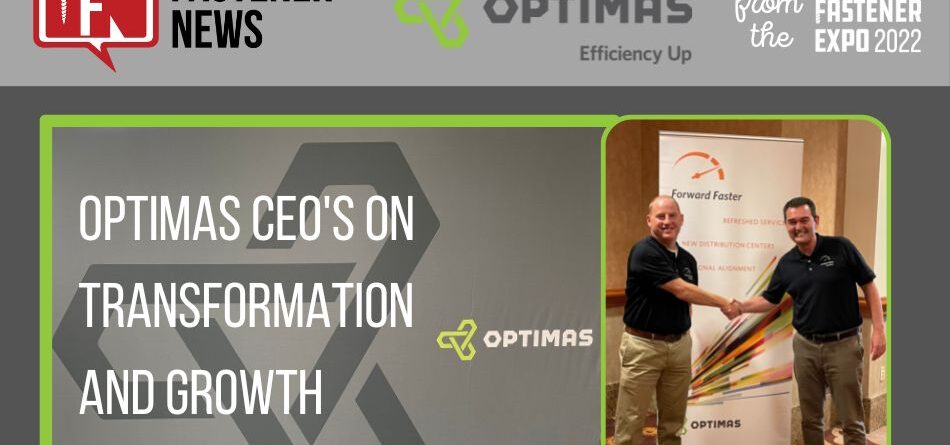

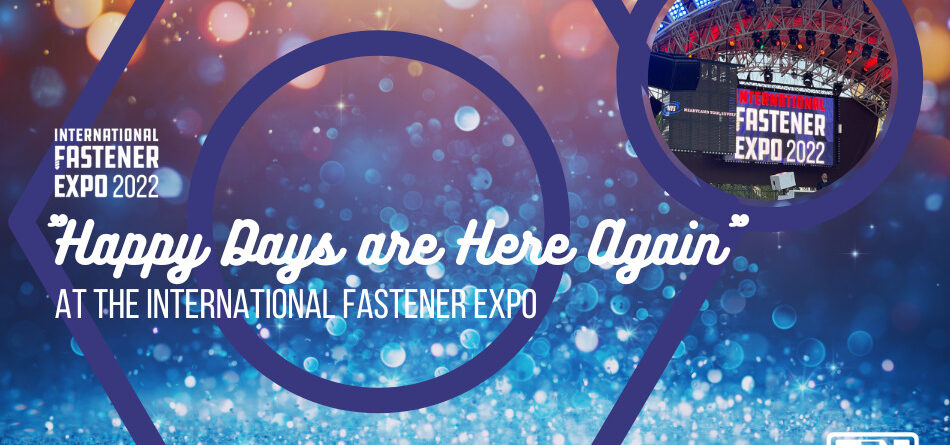

 For more than 40 years, the International Fastener Expo has brought together both the domestic and international fastener industry on an annual basis to network, discover, learn, and source products and services through a highly efficient B2B relationship-focused atmosphere. The 41st edition of the International Fastener Expo in Las Vegas, NV October 17-19th, 2022 saw a record number of exhibitors and attendees since prior to the pandemic.
For more than 40 years, the International Fastener Expo has brought together both the domestic and international fastener industry on an annual basis to network, discover, learn, and source products and services through a highly efficient B2B relationship-focused atmosphere. The 41st edition of the International Fastener Expo in Las Vegas, NV October 17-19th, 2022 saw a record number of exhibitors and attendees since prior to the pandemic.






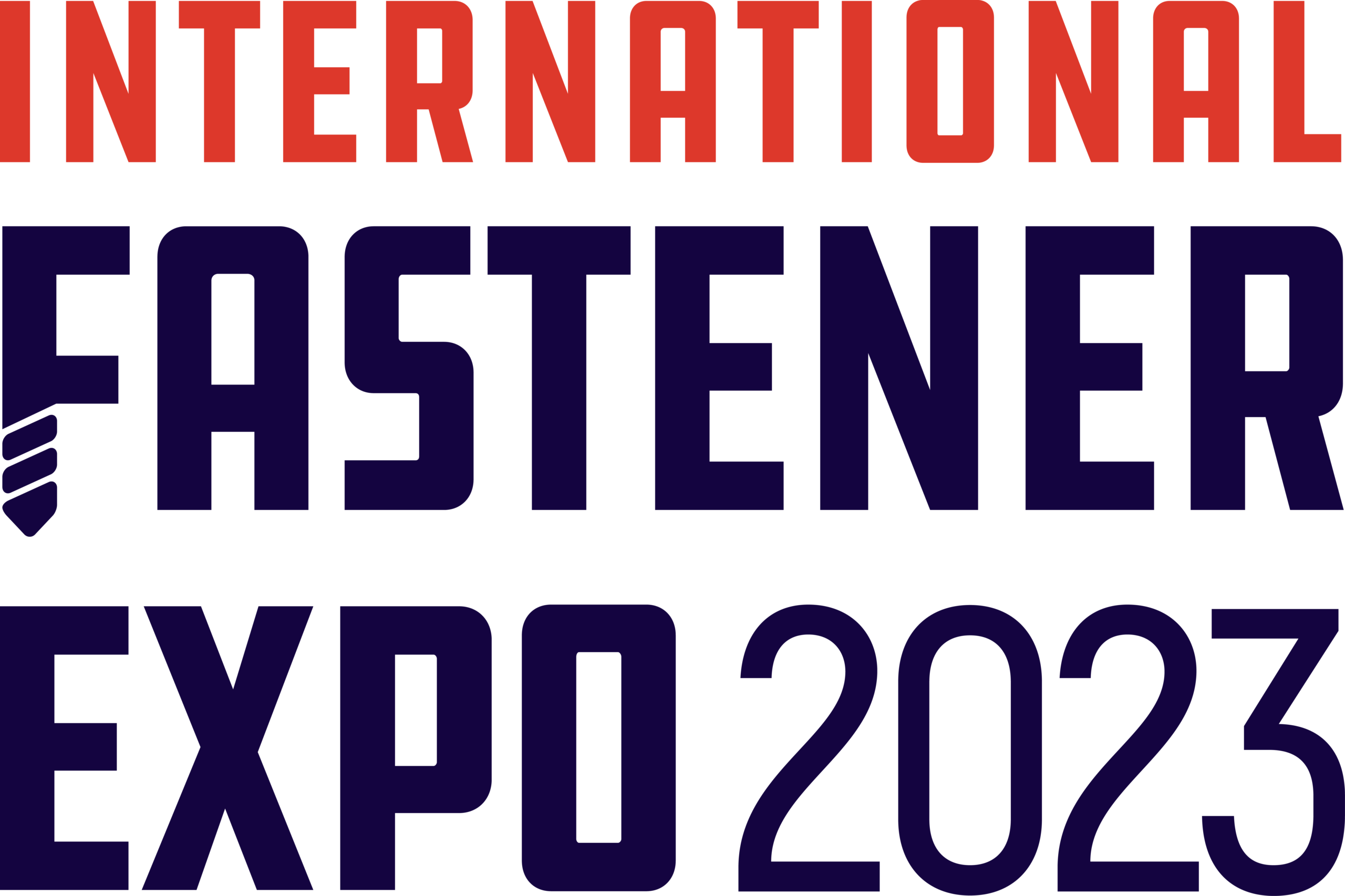
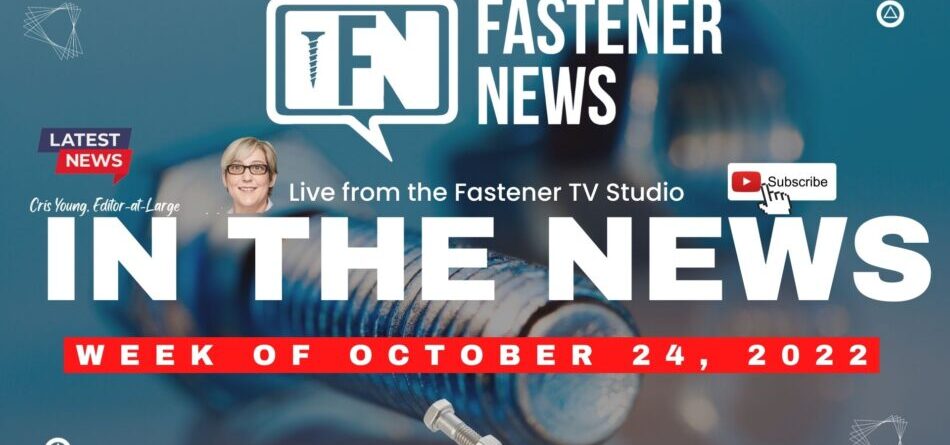


 Happening today, and thru the 25th is The Fastener Training Institute and Industrial Fasteners Institute’s in-person, two full-day training opportunity on the fundamentals of fastener metallurgy and heat treatment. Go to FastenerTraining.org to find out about upcoming classes.
Happening today, and thru the 25th is The Fastener Training Institute and Industrial Fasteners Institute’s in-person, two full-day training opportunity on the fundamentals of fastener metallurgy and heat treatment. Go to FastenerTraining.org to find out about upcoming classes.
 November 3rd is the Midwest Fastener Association’s Scholarship Awards & Elections Dinner. Guest Speaker will Dan Hampton, former Chicago Bears player. Get more info:
November 3rd is the Midwest Fastener Association’s Scholarship Awards & Elections Dinner. Guest Speaker will Dan Hampton, former Chicago Bears player. Get more info:  Fastener Training Week | LA | is happening Nov. 14-18, 2022. Instead of 7 separate one-day classes, Fastener Training Week | LA will offer 4 intensive days of education and virtual plant tours as part of the acclaimed FTI Certified Fastener SpecialistTM (CFS) advanced technical training program. See details and register at
Fastener Training Week | LA | is happening Nov. 14-18, 2022. Instead of 7 separate one-day classes, Fastener Training Week | LA will offer 4 intensive days of education and virtual plant tours as part of the acclaimed FTI Certified Fastener SpecialistTM (CFS) advanced technical training program. See details and register at 


